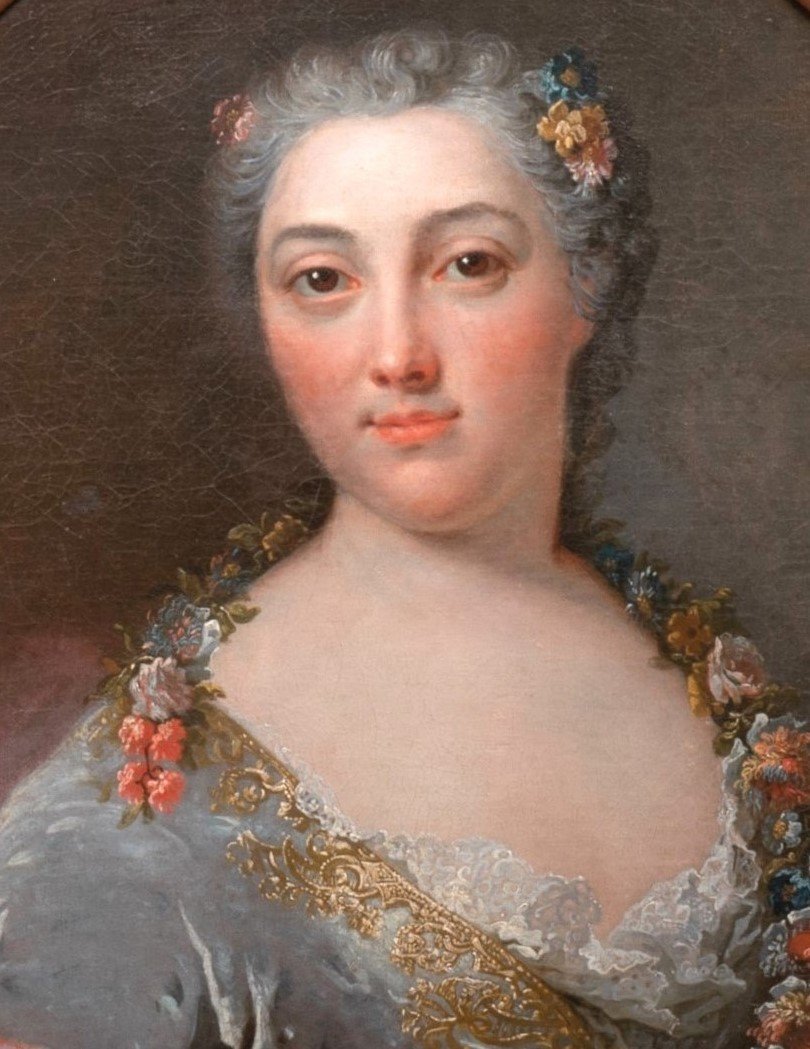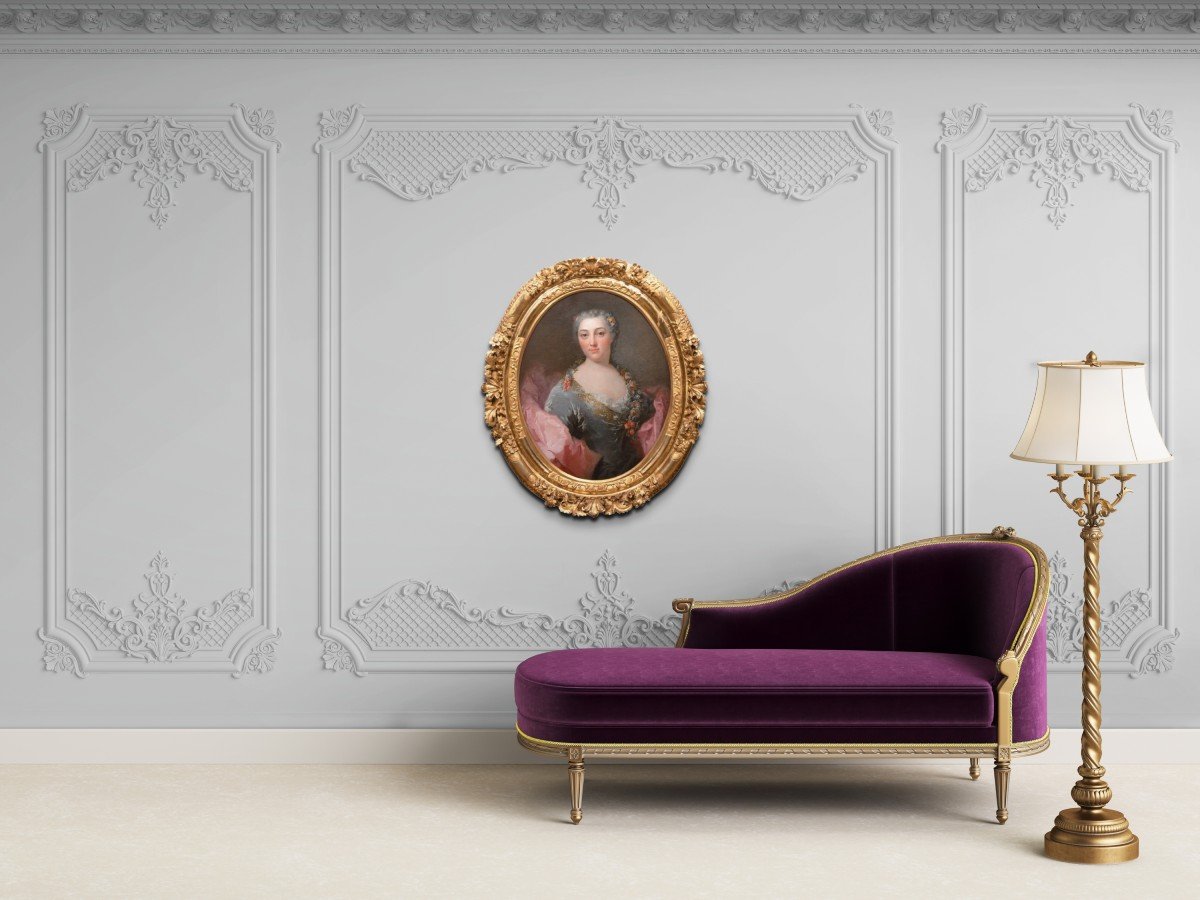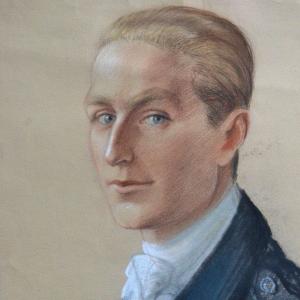Depicted down to the waist, she is dressed in a gray silk dress embroidered with gold threads around the slit. A large pink stole gracefully wraps her figure, while a garland of flowers descends along her shoulders.
With her head slightly tilted, turned three-quarters, the young woman gazes into the distance, which brings a dreamy effect to her large velvety brown eyes.
The artist's brush gently brushes her face with pearly pink reflections where the feverish red of the cheeks contrasts with the frosty gray of the powdery hair.
The freshness of youth and natural elegance emerge from this portrait where the artist, thanks to his skilful brush, animates the model.
18th century French School
By Robert Le Vrac Tournières (Caen 1667-1752)
Oil on oval canvas,
Dimensions: h. 69 cm, w. 55cm
Important 18th century richly carved giltwood frame.
Framed : h. 93 cm, w. 80cm
On the work of Robert le Vrac Tournières to refer to the catalog of the exhibition of the Museum of Fine Arts in Caen: Robert Le Vrac Tournières, the facets of a portraitist, by Eddie Tassel and Patrick Ramade; June-September 2014 (Snoeck 2014)
Robert LE VRAC TOURNIERES (Caen 1667-1752)
Son of a tailor from Caen, Robert Le Vrac trained with Bon Boulogne in Paris. He became a member of the Academy of Saint-Luc in 1695. The painter called himself Robert Tournières, this name designating the land of origin of the family, a place near Bayeux. He collaborated with Hyacinthe Rigaud and executed copies of his works in 1698 and 1699. He was received as a portraitist at the Academy in 1702. Tournières was noticed at the Salon of 1704 where he exhibited around twenty works, mainly portraits, individual or collectives, and history paintings. Ambitious and full of resources, Tournieres does not contain his talent in the narrow genre of portraiture, but touches on profane and sacred history, the specialty which earned him a second reception at the Academy as a history painter.
Despite this double admission, it was rather in the art of portraiture that he had a long and brilliant career, almost exclusively Parisian. For nearly half a century, an aristocratic and bourgeois clientele frequented his workshop. His singular and recognizable style while being faithful to the formulas defined by Rigaud and Largilliere reveal an honorable talent and know-how. A patient observer, he is known for his delicate colors, the flexibility of his brushwork and his elegant drapes.
Often neglected and misunderstood by art critics, unfairly relegated to the background in the face of the giants of the 18th century portrait, very little engraved by his contemporaries, his work comes out of oblivion and the homage was paid to him by the museum of Caen in 2014 with a monographic exhibition.



























 Le Magazine de PROANTIC
Le Magazine de PROANTIC TRÉSORS Magazine
TRÉSORS Magazine Rivista Artiquariato
Rivista Artiquariato
